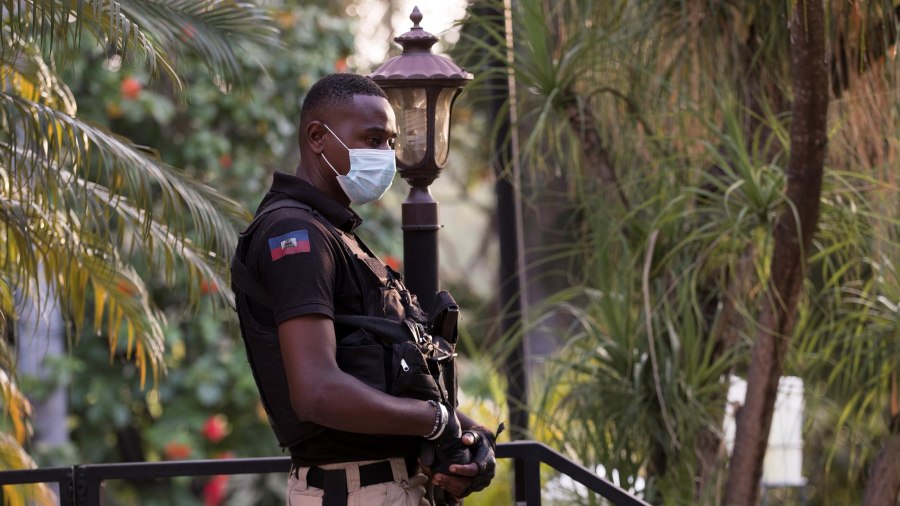
A Colombian channel that had access to a 15-hour audio published the confession of 4 of those involved in the assassination of Jovenel Moise. These narrate his version of what happened the day he was killed and in the hours that followed.
Colombian ex-military prisoners in Haiti have accepted responsibility for the assassination of the country’s president, Jovenel Moise, in an action perpetrated on July 7 at his residence in Port-au-Prince in which he was injured. his wife, Martine, as reported this Wednesday Snail News.
This television channel noted that the statements are in 15 hours of audio recordings to which he had access and in which four of those involved narrate their version of what happened that day and in the hours following the murder.
Those speaking in the audios are identified as retired Army Captain Germán Rivera García, retired second lieutenant Jheyner Carmona, retired sergeant Angel Yarce Serra and retired professional soldier Naiser Franco Castañeda.
You may be interested in: The shocking story of a family that managed to escape the Taliban in the midst of chaos
According to reports obtained by Caragol Notícies, Joseph Felix Badio, a former official of the Haitian Ministry of Justice, was the one who gave Rivera the order of the operation that ended with the murder of Moise.
In the audio, who introduces himself as Rivera, whom the other ex-military called “Mike,” he says, “(Badio) said he had to kill them all. They’re all cops, president security, whatever. inside the house, they had to be killed. “
Carmona for her part said that the order given to them by “Mike” was that “it was time to go in and kill everyone, it was time to kill all the police, or rather, that if there was even a pet to kill the pet, that there could be no witnesses. “
The retired sergeant added, “They sold us the idea that this was the arrest warrant, that it was a arrest warrant, but Mike ‘told us it was time to peel (kill) the president.”
Information from Caragol Notícies indicates that ex-soldier Víctor Pineda Cardona was the one who shot President Moise, according to Franco Castañeda.
Besides: U.S. soldiers left Kabul airport to rescue 169 people
“They say it was Pineda. They heard him himself. He’s very worried, this guy has no peace,” he is heard saying as he identifies himself as Franco in the audio.
FRUSTRATED ESCAPE
On the other hand, Snail News indicated that the assault on Moise’s residence lasted about 30 minutes and that after the assassination of the president the mercenaries sought money and valuables.
Prior to the operation, the report says, they had been warned that Moise had between $ 18 million and $ 45 million at home, and in the room they found two suitcases and three boxes in his opinion loaded with tickets.
The group loaded the money in vehicles and following the established plan they went to the Presidential Palace because there the new president of Haiti was going to take possession, to which they supposedly had to protect.
The retreat to the Presidential Palace was coordinated by the retired Sergeant of the Army Duberney Capador, who was killed in the events, as were Miguel Guillermo Garzón and Maurice Javier Romero.
“Capador was taking us to the Palace, because in the Palace they were going to protect us, and there was the Police and they were going to protect us,” said whoever claims to be Yarce.
He detailed that on the way they came across some vehicles crossed on the road so they had to stop and get off.
Haitian police later blocked their way with vans and tanks, in front of which the group took refuge in a house from which they were evicted with tear gas.
Moise’s assassination was committed, according to investigations, by a commando of 26 mercenaries who broke into the presidential residence without finding resistance from the security forces guarding the president.
According to the latest police data, 44 people are detained, including 12 members of this institution, as well as 18 Colombians, mostly retired military, and six Haitians, three of them nationalized Americans.